Authentic Parts Classified as Counterfeit and Seized by CBP Highlight Financial Risks for Importers and Exporters
Kristal Snider
ERAI, Inc
Authentic Parts Classified as
Countfeit & Seized by CBP Highlight Financial Risks for
Importers and Exporters
 By: Kristal Snider By: Kristal Snider
For more than a year, beginning in
January 2014, a distributor in the U.S. placed eleven (11) orders for
more than 16,000 pieces of Texas Instruments part number
TMS320VC5416ZGU160 from an Israeli distributor and subcontractor
servicing the defense, medical and communications industries in Israel.
No nonconformities were ever detected during the inspection of these
shipments. No complaints or concerns were raised by the U.S.
distributor’s end user and sole recipient of all prior shipments. For
all intents and purposes, the Israeli and American companies enjoyed a
mutually beneficial relationship and no one, including the end user, had
reason to suspect the goods in question were anything other than
genuine Texas Instruments parts. That is, until May 4, 2015, when one of
the final three scheduled deliveries containing 4,000 pieces of the
aforementioned part worth $46,435.00 was detained and subsequently
seized by CBP under Title 19, United States Code, Section (USC) 1595a(C)
for bearing a counterfeit trademark. The initial detention notice
triggered a flurry of activity that would slow to a crawl, then drag on
for ten costly, labor-intensive months and ultimately conclude with the
release of the goods. This distributor’s experience captures the
significance of goods being correctly classified as authentic or
counterfeit, highlights the importance of an open line of communication
between CBP and industry, and personifies the struggles business owners
are facing that could result in substantial financial
loss.
The
Initial Detention Notice
It was while checking the delivery status of the
shipment using Federal Express’ online tracking system that the U.S.
distributor first learned the parts they had paid for wire transfer in
advance had been held by U.S. Customs and Border Protection (CBP) and,
shortly thereafter, on May 5, 2015, the standard “Detention Notice and
Custody Receipt for Detained Property” was received. The distributor was
given seven days to provide evidence to demonstrate the authenticity of
the parts. The Israeli supplier was asked to provide supply chain
traceability to assist in this process but subsequently refused to
cooperate. A representative of the Israeli supplier later revealed the
reason they were not able to provide this documentation is that doing so
would have jeopardized their relationship with their supplier and
supplier’s relationship with Texas Instruments due to the fact these
parts were allegedly sold in violation of the supplier’s distribution
agreement with Texas Instruments.
Sans the necessary supply chain traceability, the U.S.
distributor then contacted its customer, the recipient of all prior
shipments, to make them aware of the situation and to see if they could
return samples from past shipments for reevaluation and comparison to a
known good sample. This effort was successful; the U.S. distributor was
confident they could produce the evidence necessary to prove the parts
being detained were authentic.
Part Comparison and
Findings
The U.S. distributor purchased three (3) golden samples
from an authorized TI distributor in the U.S. and compared these parts
to samples they were able to retrieve from their customer that were
representative of prior shipments. Using various inspection methods, the
parts were examined both externally and internally and no evidence of
tampering was observed. The general appearance, physical construction,
and die markings are consistent. The results of the comparison analysis
were presented to CBP but did not result in the release of the
goods.
Photo Comparison of Known Golden Sample vs
Samples Representative of Prior Shipments
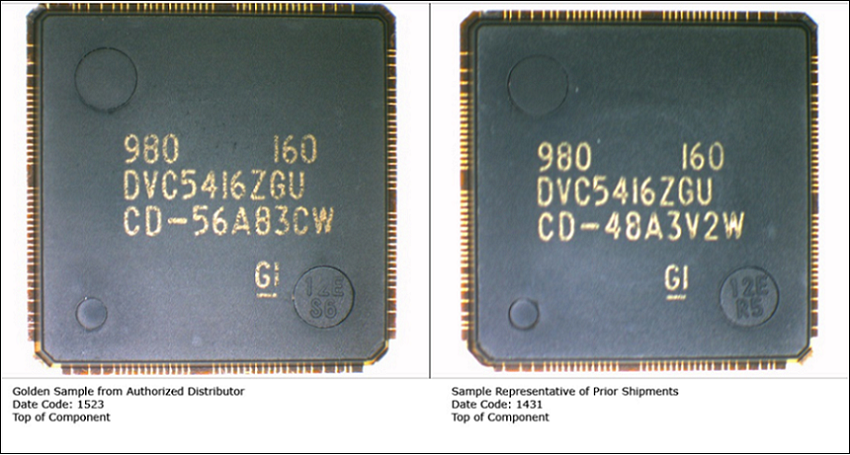
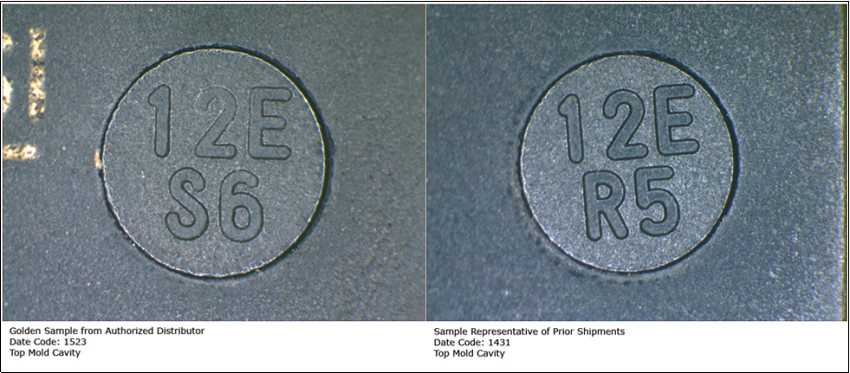
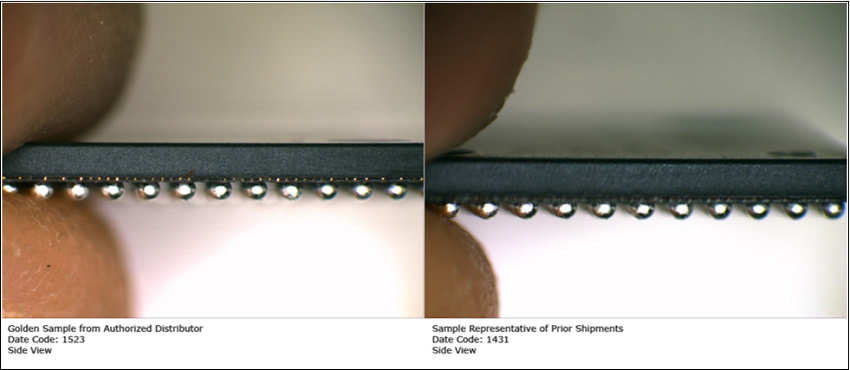
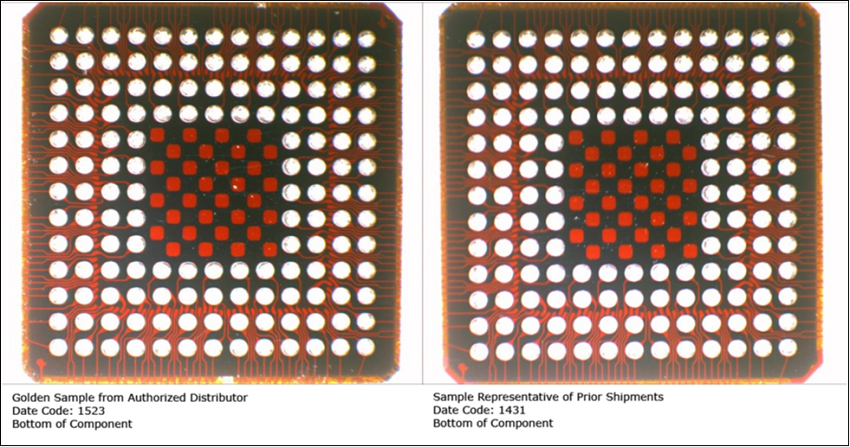
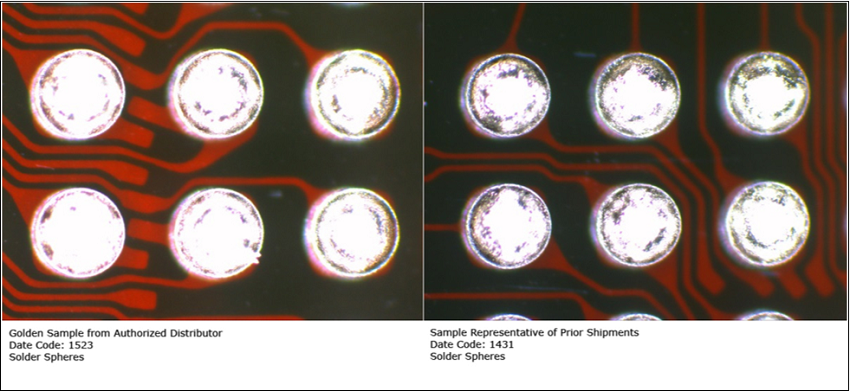
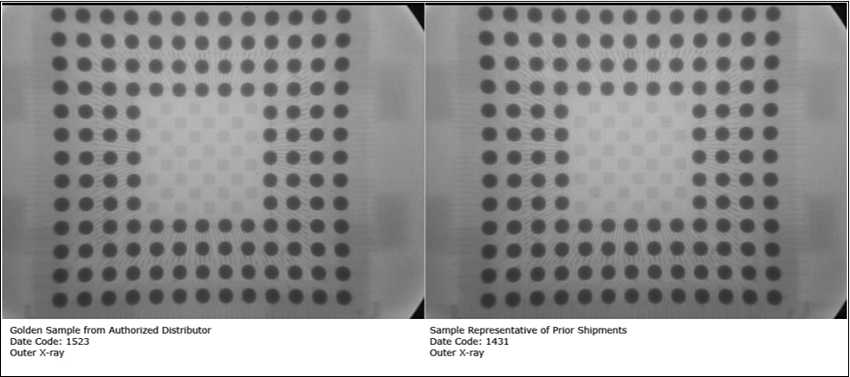
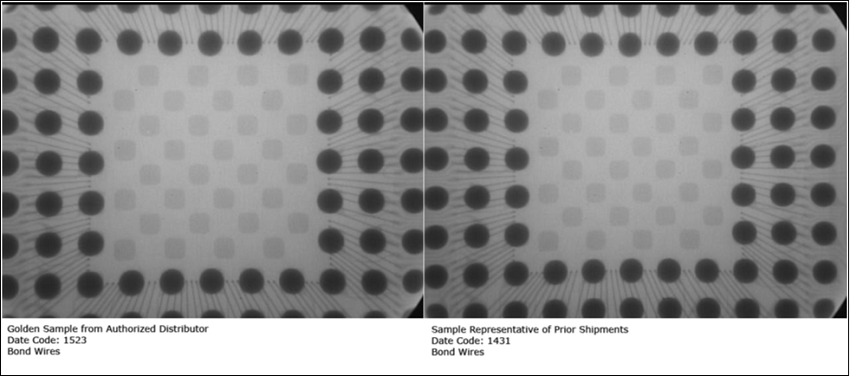
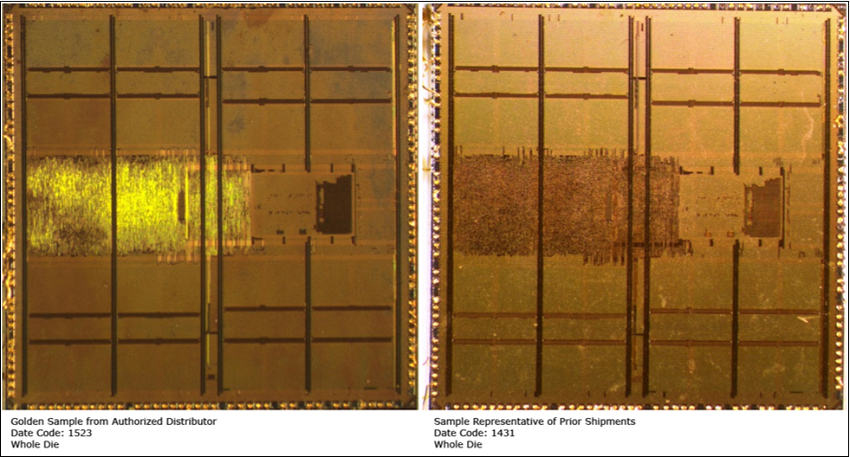
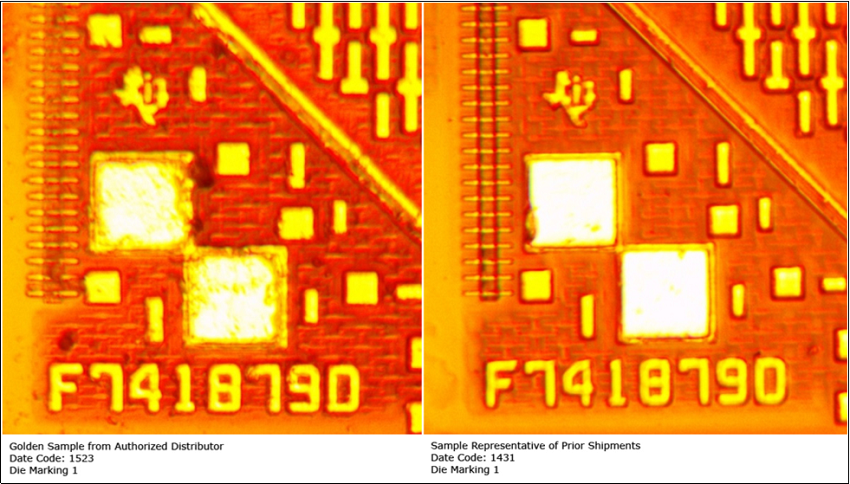
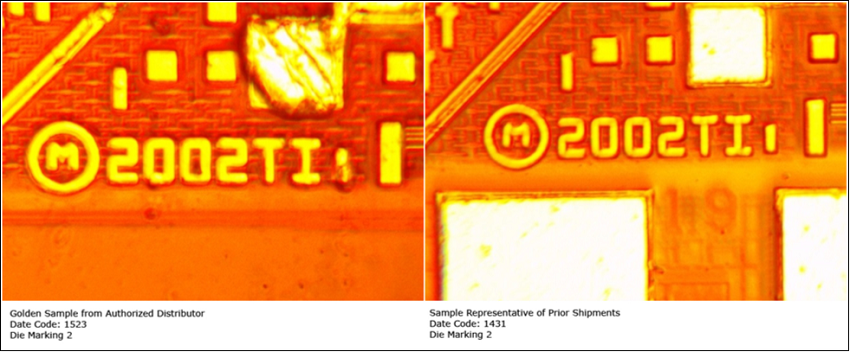
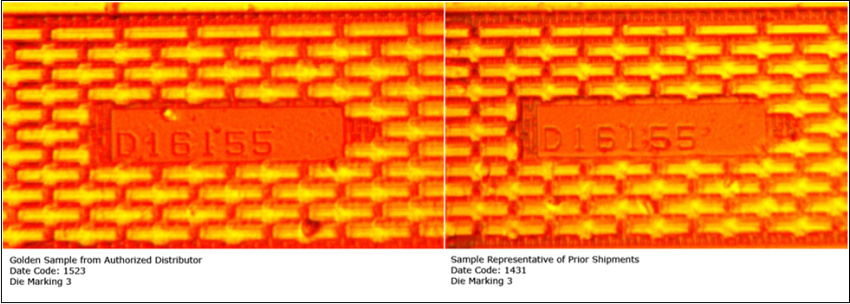
Notice of Seizure
On August 25, 2015, after receiving
the above noted findings twenty days earlier, the U.S. distributor
received formal notification from CBP that the goods in question had
been seized for bearing a counterfeit trademark. The appraised domestic
value of the property was assessed at $99,000.00. The U.S. distributor
immediately exercised its right to “petition” the seizure and sought
remission of the forfeiture in accordance with CBP’s “Election of
Proceedings”.
The Petition Process
The U.S. distributor’s attorney
initiated contact with CBP on September 22, 2015 and again on October
12, 2015 in an effort to obtain two (2) samples of the seized parts for
inspection and comparison to the known golden sample and representative
sample previously analyzed. The release of the samples was finally
granted on or about October 27, 2015.
On November 4, 2015 the U.S.
distributor received a cease and desist letter from Texas Instruments
which included, but is not limited to, the following
statements:
“TI
learned that you have been importing counterfeit TI semiconductor
products.”
“As you
are no doubt aware, obtaining TI products from sources that are not
expressly authorized by TI presents a substantial risk that such
products are counterfeit. Indicators that a seller may be offering
counterfeit products include unusually low prices, prior seizures of
counterfeit goods by Customs officials, and poor or missing chain of
custody documentation to TI or an authorized source.”
“We hereby demand that you
immediately cease and desist any importation, offers to sell, sales, or
other transactions involving counterfeit TI
products.”
The U.S. distributor was given five (5) business days to
confirm they agreed to discontinue the purchase and sale of counterfeit
TI products; they responded to TI, as they had responded to CBP,
asserting that the parts are original and not
counterfeit.
On
November 17, 2015, more than six months after receiving the original
notice of detention, the U.S. distributor was finally able to compare
the inspection results of the seized parts against the previous
comparison involving the known golden sample and representative sample
provided by the U.S. distributor’s customer: the seized parts were
consistent with the other two lots.
Photo Comparison of Known
Gold Sample vs Samples Seized by CBP
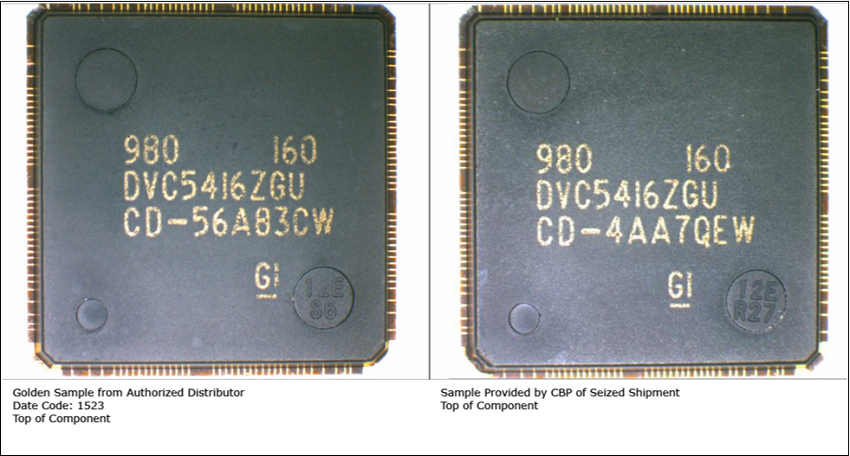
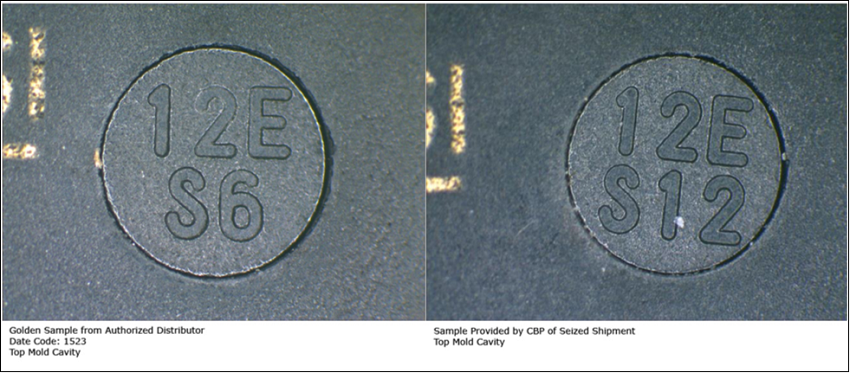
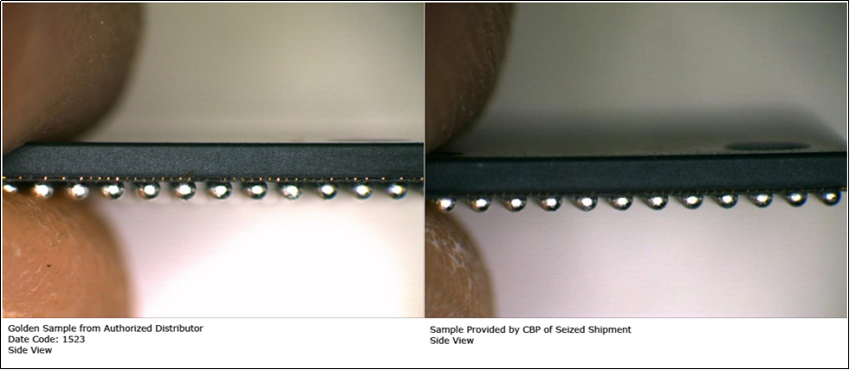
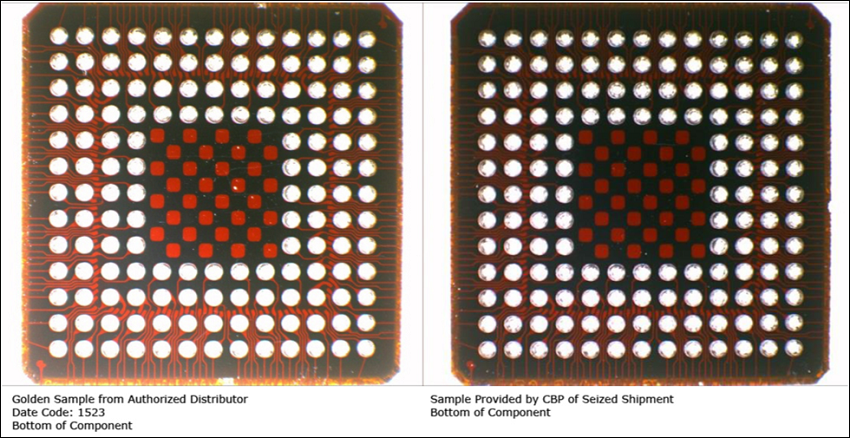
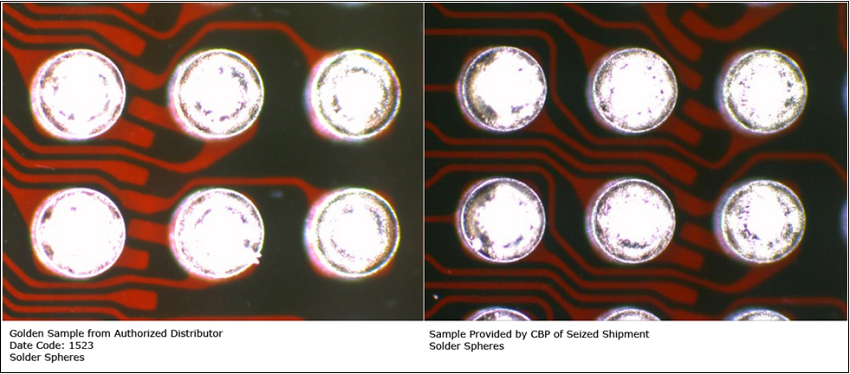
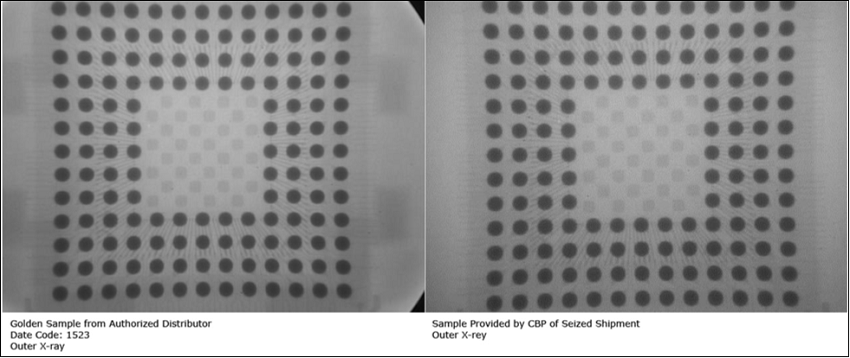
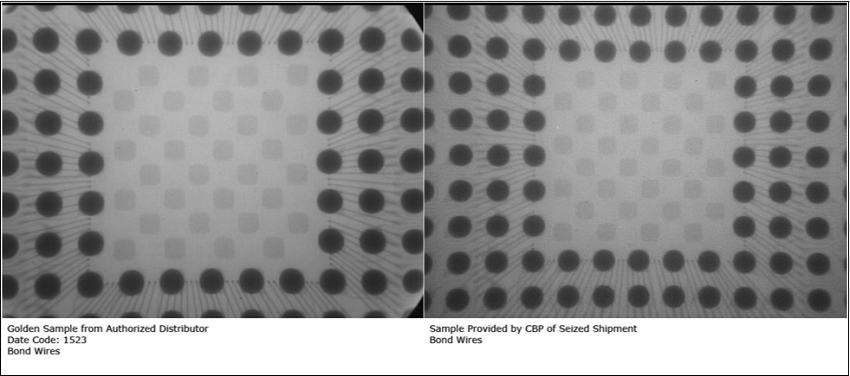
In addition to the results of the part comparison and
after tremendous pressure, on December 31, 2015, the Israeli supplier
provided a copy of a packing list as evidence the goods in question were
purchased from Arrow Seed (Hong Kong) Limited, a division of Arrow
Electronics, Inc. and an authorized Texas Instruments distributor. While
the quantity and dates align with the goods purchased by the U.S.
distributor, the identity of the recipient and the ship to address had
been redacted. This new information, albeit not complete, was also
submitted to CBP for consideration.
Notice of Release from
CBP
On
January 25, 2016 the U.S. distributor received written notification from
CBP the goods would be released after concluding the burden of proof
had been met to support its assertion that the goods are not
counterfeit. Prior to initiating the return of the shipment, CBP
required the U.S. distributor to sign, notarize and return a “Hold
Harmless Agreement” releasing and forever discharging the United States
and its officers from any and all action, suits, lawsuits, proceedings,
costs, expenses, debts, dues, contracts, judgments, damages, claims
and/or demands whatsoever in connection with the detention, seizure
and/or release of the goods.
On March 1, 2016, the partially damaged and improperly
packaged goods were delivered to the U.S. distributor’s facility marking
an end to this lengthy and costly ordeal.
Financial Risks for
Importers
As briefly mentioned early on, the payment terms for all
orders referenced herein were wire transfer in advance. To offset their
financial risk, the U.S. distributor’s purchase order contract
specifically designated “FOB Destination” in its shipping terms which
means the Israeli supplier was responsible for the goods until they
reached the U.S. distributor’s location. Despite the fact these terms
were in the agreement, the Israeli supplier refused to refund the U.S.
distributor’s advanced payment totaling $46,435.00 when the goods were
detained and subsequently seized. Had the U.S. distributor not been
successful in meeting the burden of proof that the goods were not
counterfeit and securing their release from CBP, it is unlikely they
would have received reimbursement without incurring additional legal
expenses.
Conversely, this exporter and all others face equal risks
and must openly communicate with international trading partners
relative to the availability of supply chain traceability and testing,
inspection and counterfeit risk mitigation requirements prior to
shipping goods. Had the parts been shipped on an open account, it is
unlikely the U.S. distributor would have fought as hard as it did to
secure the release of the goods and the Israeli supplier would have had
no hope of retrieving the goods or receiving payment for goods that were
not delivered in accordance with the purchase order contract or not at
all.
Caveat Emptor
U.S. citizens and business owners
have no constitutional right to import or conduct international trade.
Importers must constantly measure risk and be on the lookout for
emerging risks such as goods being damaged, detained or seized by
CBP.
Conclusion
There is no question in my mind
that CBP is doing what it can to prevent counterfeit electronic parts
from entering the supply chain and is doing so while facing tremendous
challenges and pressure from brand owners and others. The takeaway from
this article should not be that CBP is doing a poor job; it should be
that industry and CBP desperately need a more open line of communication
and must work together to educate agents and policy
makers.
When
authentic parts are inadvertently removed from the supply chain, or are
damaged due to improper handling and repackaging, an opportunity for a
counterfeit part to enter in their place is created.
SEE MORE BLOG ENTRIES
|